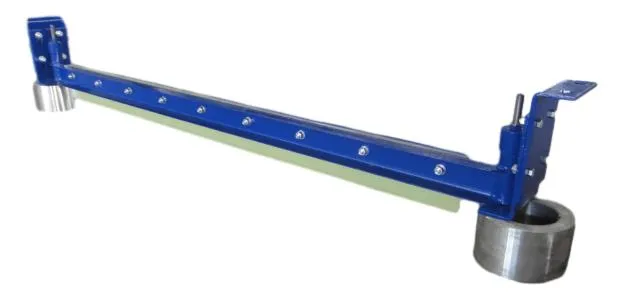 Afrikaans
Afrikaans  Albanian
Albanian  Amharic
Amharic  Arabic
Arabic  Armenian
Armenian  Azerbaijani
Azerbaijani  Basque
Basque  Belarusian
Belarusian  Bengali
Bengali  Bosnian
Bosnian  Bulgarian
Bulgarian  Catalan
Catalan  Cebuano
Cebuano  Corsican
Corsican  Croatian
Croatian  Czech
Czech  Danish
Danish  Dutch
Dutch  English
English  Esperanto
Esperanto  Estonian
Estonian  Finnish
Finnish  French
French  Frisian
Frisian  Galician
Galician  Georgian
Georgian  German
German  Greek
Greek  Gujarati
Gujarati  Haitian Creole
Haitian Creole  hausa
hausa  hawaiian
hawaiian  Hebrew
Hebrew  Hindi
Hindi  Miao
Miao  Hungarian
Hungarian  Icelandic
Icelandic  igbo
igbo  Indonesian
Indonesian  irish
irish  Italian
Italian  Japanese
Japanese  Javanese
Javanese  Kannada
Kannada  kazakh
kazakh  Khmer
Khmer  Rwandese
Rwandese  Korean
Korean  Kurdish
Kurdish  Kyrgyz
Kyrgyz  Lao
Lao  Latin
Latin  Latvian
Latvian  Lithuanian
Lithuanian  Luxembourgish
Luxembourgish  Macedonian
Macedonian  Malgashi
Malgashi  Malay
Malay  Malayalam
Malayalam  Maltese
Maltese  Maori
Maori  Marathi
Marathi  Mongolian
Mongolian  Myanmar
Myanmar  Nepali
Nepali  Norwegian
Norwegian  Norwegian
Norwegian  Occitan
Occitan  Pashto
Pashto  Persian
Persian  Polish
Polish  Portuguese
Portuguese  Punjabi
Punjabi  Romanian
Romanian  Russian
Russian  Samoan
Samoan  Scottish Gaelic
Scottish Gaelic  Serbian
Serbian  Sesotho
Sesotho  Shona
Shona  Sindhi
Sindhi  Sinhala
Sinhala  Slovak
Slovak  Slovenian
Slovenian  Somali
Somali  Spanish
Spanish  Sundanese
Sundanese  Swahili
Swahili  Swedish
Swedish  Tagalog
Tagalog  Tajik
Tajik  Tamil
Tamil  Tatar
Tatar  Telugu
Telugu  Thai
Thai  Turkish
Turkish  Turkmen
Turkmen  Ukrainian
Ukrainian  Urdu
Urdu  Uighur
Uighur  Uzbek
Uzbek  Vietnamese
Vietnamese  Welsh
Welsh  Bantu
Bantu  Yiddish
Yiddish  Yoruba
Yoruba  Zulu
Zulu Exploring the Benefits and Applications of Snub Rollers in Industrial Machinery Systems
Understanding Snub Rollers An Essential Component in Conveyor Systems
In the realm of material handling and conveyor systems, various components play pivotal roles in ensuring efficiency, reliability, and safety. One such essential element is the snub roller. While it might appear to be a simple mechanical device, the snub roller provides numerous benefits that significantly enhance the functionality of conveyor systems.
What is a Snub Roller?
A snub roller, often referred to as a snub drum or snub pulley, is a cylindrical component used in belt conveyor systems. It is specifically designed to alter the direction of a belt, typically increasing the wrap angle around a drive pulley and, consequently, improving the friction and traction between the belt and the pulley. This increased wrap angle aids in maximizing the belt’s ability to transmit power, thereby improving the overall efficiency of the conveyor system.
The Functionality of Snub Rollers
The primary function of snub rollers is to redirect the conveyor belt and maintain its tension. In many conveyor setups, particularly those that transport heavy materials over long distances, it is crucial to minimize slack in the belt to avoid slipping and ensure smooth operation. Snub rollers effectively guide the belt while maintaining or increasing tension, which is necessary for optimal performance.
Moreover, snub rollers contribute to dynamic stability in conveyor systems. By changing the belt’s trajectory and providing additional support, they help reduce wear and tear on both the belt and other components, such as bearings and drive motors. This longer lifespan for parts translates to lower maintenance costs and reduced downtime, bolstering productivity.
Applications in Various Industries
Snub rollers find applications across a multitude of industries, including mining, construction, and manufacturing. In mining, for instance, they play a crucial role in the transportation of bulk materials like coal, gravel, and ores. The large, heavy loads necessitate robust conveyor systems, where snub rollers ensure that the belts can effectively convey materials without slipping.
snub roller

In the manufacturing sector, snub rollers are often employed in assembly lines, packaging, and distribution processes. Their ability to maintain belt tension and change direction allows manufacturers to optimize their layouts, ensuring that products move smoothly and efficiently through production stages.
Benefits of Using Snub Rollers
1. Increased Efficiency By improving the contact area between the belt and pulleys, snub rollers enable a more efficient power transfer, which is vital for handling heavy loads.
2. Reduced Wear Snub rollers help minimize unnecessary strain on the conveyor belt and associated components, significantly extending their operational life.
3. Enhanced Stability By providing additional support and tension to the belt, snub rollers facilitate smoother operation, reducing the likelihood of accidents or malfunctions.
4. Cost-Effectiveness Although there is an upfront cost associated with integrating snub rollers into a conveyor system, the long-term savings on maintenance and downtime make them a wise investment.
Conclusion
In summary, snub rollers are a crucial component of conveyor systems that enhance operational efficiency, ensure stability, and reduce wear and tear on equipment. Their importance spans various industries, making them indispensable in the transportation of materials. Investing in high-quality snub rollers is not just about immediate performance; it’s a strategy for long-term operational success and reliability. Understanding their role can help businesses optimize their material handling processes and improve overall productivity.
-
Revolutionizing Conveyor Reliability with Advanced Rubber Lagging PulleysNewsJul.22,2025
-
Powering Precision and Durability with Expert Manufacturers of Conveyor ComponentsNewsJul.22,2025
-
Optimizing Conveyor Systems with Advanced Conveyor AccessoriesNewsJul.22,2025
-
Maximize Conveyor Efficiency with Quality Conveyor Idler PulleysNewsJul.22,2025
-
Future-Proof Your Conveyor System with High-Performance Polyurethane RollerNewsJul.22,2025
-
Driving Efficiency Forward with Quality Idlers and RollersNewsJul.22,2025





























